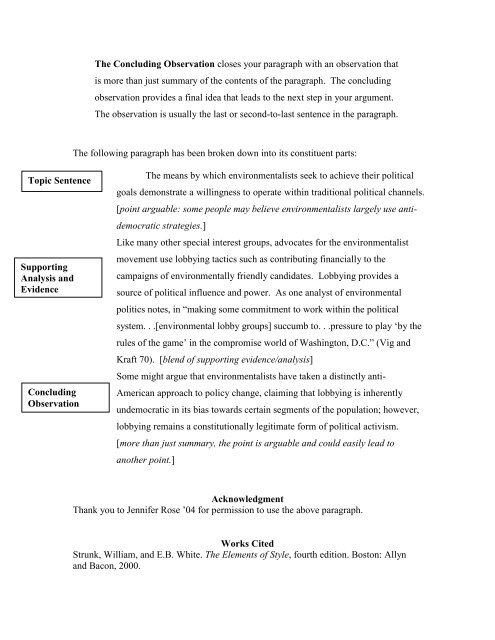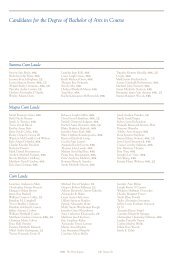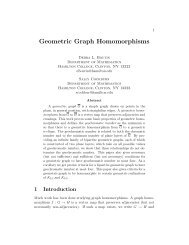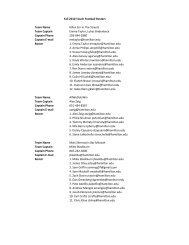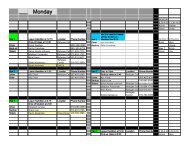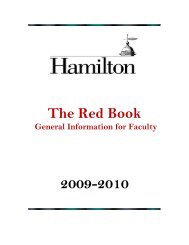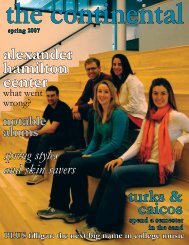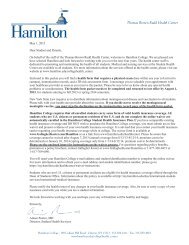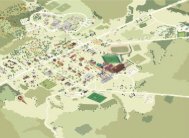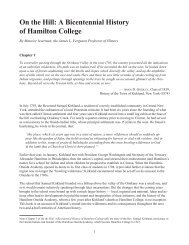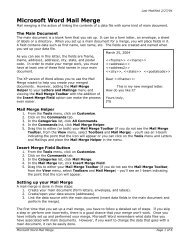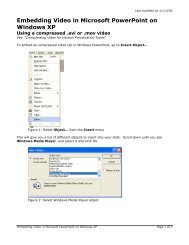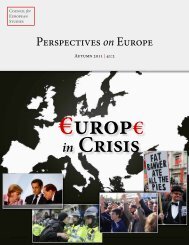Paragraph Structure - Hamilton College
Paragraph Structure - Hamilton College
Paragraph Structure - Hamilton College
Create successful ePaper yourself
Turn your PDF publications into a flip-book with our unique Google optimized e-Paper software.
The Concluding Observation closes your paragraph with an observation thatis more than just summary of the contents of the paragraph. The concludingobservation provides a final idea that leads to the next step in your argument.The observation is usually the last or second-to-last sentence in the paragraph.The following paragraph has been broken down into its constituent parts:Topic SentenceSupportingAnalysis andEvidenceEvidenceConcludingObservationThe means by which environmentalists seek to achieve their politicalgoals demonstrate a willingness to operate within traditional political channels.[point arguable: some people may believe environmentalists largely use antidemocraticstrategies.]Like many other special interest groups, advocates for the environmentalistmovement use lobbying tactics such as contributing financially to thecampaigns of environmentally friendly candidates. Lobbying provides asource of political influence and power. As one analyst of environmentalpolitics notes, in “making some commitment to work within the politicalsystem. . .[environmental lobby groups] succumb to. . .pressure to play ‘by therules of the game’ in the compromise world of Washington, D.C.” (Vig andKraft 70). [blend of supporting evidence/analysis]Some might argue that environmentalists have taken a distinctly anti-American approach to policy change, claiming that lobbying is inherentlyundemocratic in its bias towards certain segments of the population; however,lobbying remains a constitutionally legitimate form of political activism.[more than just summary, the point is arguable and could easily lead toanother point.]AcknowledgmentThank you to Jennifer Rose ’04 for permission to use the above paragraph.Works CitedStrunk, William, and E.B. White. The Elements of Style, fourth edition. Boston: Allynand Bacon, 2000.


